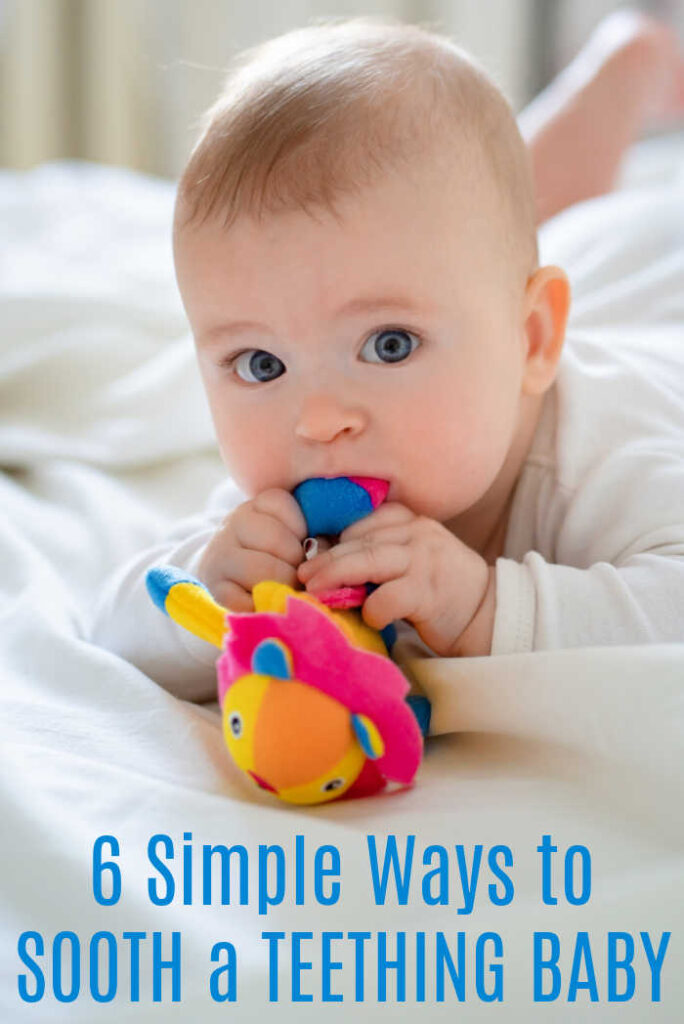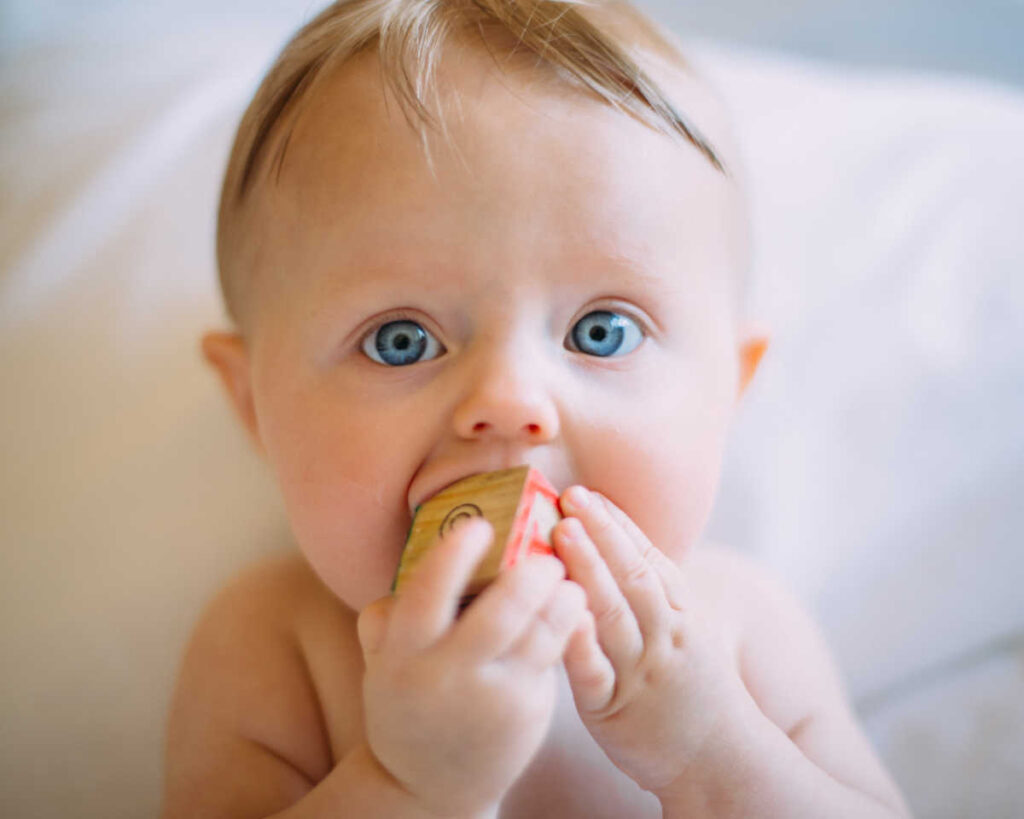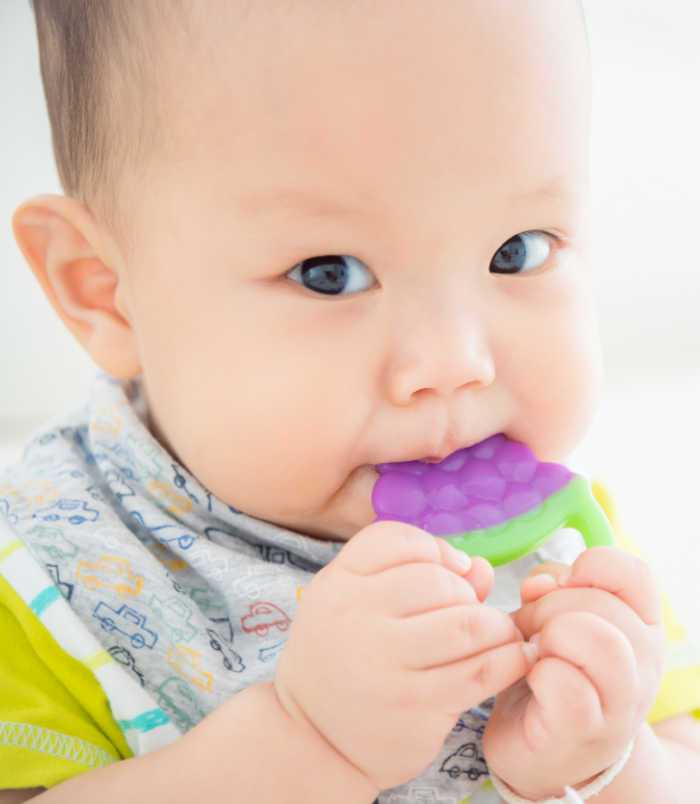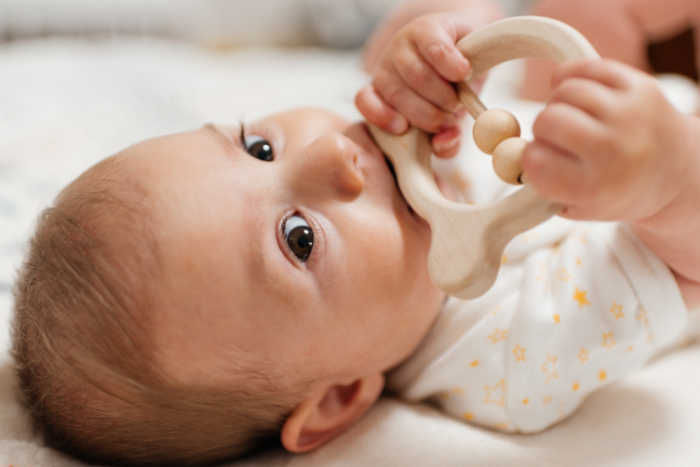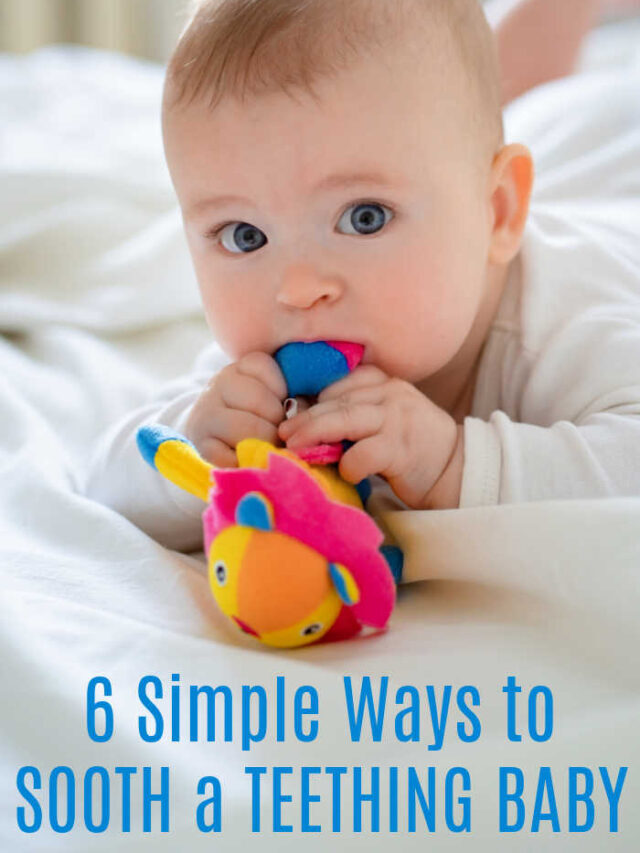6 Simple Ways to Soothe a Teething Baby
There’s nothing cuter than those first toothy grins, but cutting teeth is a tough business. And nothing can be tougher than trying to soothe a teething baby!
When a baby is teething, you’ll probably spend long days and nights trying to soothe their little one’s discomfort. Read these great tips to help you and your baby through the process of teething!
Be sure to check out even more of my helpful parenting tips, too!
6 Simple Ways to Soothe a Teething Baby
Teething affects babies differently; some may not be bothered at all, while others only have trouble with some teeth.
Swollen, red gums are an obvious sign that teething is the culprit for your baby’s sudden unrest.
Some other common symptoms you may not immediately associate with teething include unusual irritability, increased drooling, a low-grade fever, flushed cheeks, rash, rubbing the face, pulling on the ear, chewing or gnawing on toys and loose bowel movements.
Each stage of a baby’s development presents unique challenges.
Since no two babies are the same, finding the perfect approach to ease your child’s experience can take trial and error.
Begin a smoother teething journey for your family with these ideas from Malina Malkani, doctor and nutritionist, on behalf of Plum Organics.
Cold Teething Toys and Household Items
When teething, babies often look for counter-pressure that’s soothing on sore gums, which they can get by chomping down on a harder surface.
Cool temperatures also help provide teething relief.
Soothing options including silicone toothbrushes, silicone (gel-free) teething rings or toys, or even a clean silicone cooking utensil from the kitchen can be placed in the freezer.
Offer the item to your baby for chewing and mouthing, or gently hold it to the gums to help ease the pain.
Gum Massage for a Teething Baby
Using a clean finger, gently massage your baby’s gums.
The little bumps you may feel forming beneath the gum line are the tips of baby teeth making their way to the surface.
Nutritious Ice Pops
Offering cold foods or liquids is another way to provide chilled relief.
Breast milk or formula ice pops can be soothing on teething gums.
Silicone nipple pouches work well as ice pop molds for infants.
For teething babies under 6 months, fill the molds with breast milk or formula, or for toddlers, try freezing nutritious purees.
Freezing purees into teething ice pop molds offers babies two types of teething relief (counter-pressure and cool temperature) while providing nutrients and exposure to new flavors.
Some nutritious suggestions for purees to freeze include avocado or fruit blends.
Food Sticks
For babies who are teething but have not yet had a tooth erupt, try handing over a cold, large, peeled, raw carrot.
Refrigerated harder foods provide the cool temperatures and counter-pressure babies often crave during bouts of teething, as well as exposure to new flavors and textures, but in a form that won’t break off into smaller pieces that would increase risk of choking.
Manage Drool for a Teething Baby
During bouts of teething, a baby’s lips, chin and cheeks can easily become raw and chapped from excess saliva and teething-related drool.
Keep these areas as dry and protected as possible, especially when it’s cold out.
It may help to apply a thin layer of ointment to further protect the skin.
Pain Treatment
After trying all other options, if baby still seems to be in teething-related pain, talk to your pediatrician about whether over-the-counter pain medications are an option, and if so, what dosage to use for your baby.
Most experts do not recommend using numbing gels containing benzocaine, which are unsafe for infants and not likely to help with teething pain.

